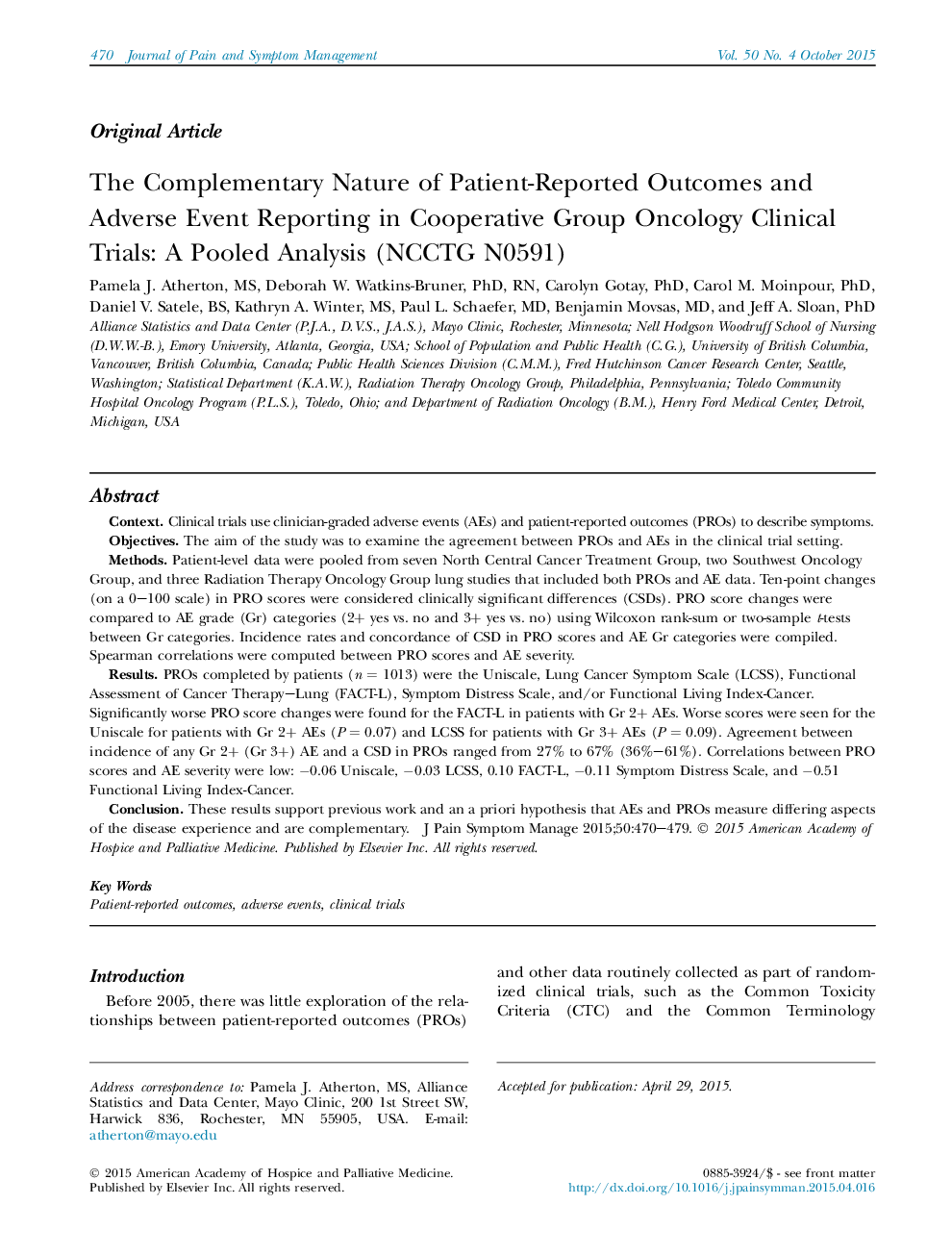| Article ID | Journal | Published Year | Pages | File Type |
|---|---|---|---|---|
| 5879649 | Journal of Pain and Symptom Management | 2015 | 19 Pages |
ContextClinical trials use clinician-graded adverse events (AEs) and patient-reported outcomes (PROs) to describe symptoms.ObjectivesThe aim of the study was to examine the agreement between PROs and AEs in the clinical trial setting.MethodsPatient-level data were pooled from seven North Central Cancer Treatment Group, two Southwest Oncology Group, and three Radiation Therapy Oncology Group lung studies that included both PROs and AE data. Ten-point changes (on a 0-100 scale) in PRO scores were considered clinically significant differences (CSDs). PRO score changes were compared to AE grade (Gr) categories (2+ yes vs. no and 3+ yes vs. no) using Wilcoxon rank-sum or two-sample t-tests between Gr categories. Incidence rates and concordance of CSD in PRO scores and AE Gr categories were compiled. Spearman correlations were computed between PRO scores and AE severity.ResultsPROs completed by patients (n = 1013) were the Uniscale, Lung Cancer Symptom Scale (LCSS), Functional Assessment of Cancer Therapy-Lung (FACT-L), Symptom Distress Scale, and/or Functional Living Index-Cancer. Significantly worse PRO score changes were found for the FACT-L in patients with Gr 2+ AEs. Worse scores were seen for the Uniscale for patients with Gr 2+ AEs (P = 0.07) and LCSS for patients with Gr 3+ AEs (P = 0.09). Agreement between incidence of any Gr 2+ (Gr 3+) AE and a CSD in PROs ranged from 27% to 67% (36%-61%). Correlations between PRO scores and AE severity were low: â0.06 Uniscale, â0.03 LCSS, 0.10 FACT-L, â0.11 Symptom Distress Scale, and â0.51 Functional Living Index-Cancer.ConclusionThese results support previous work and an a priori hypothesis that AEs and PROs measure differing aspects of the disease experience and are complementary.
